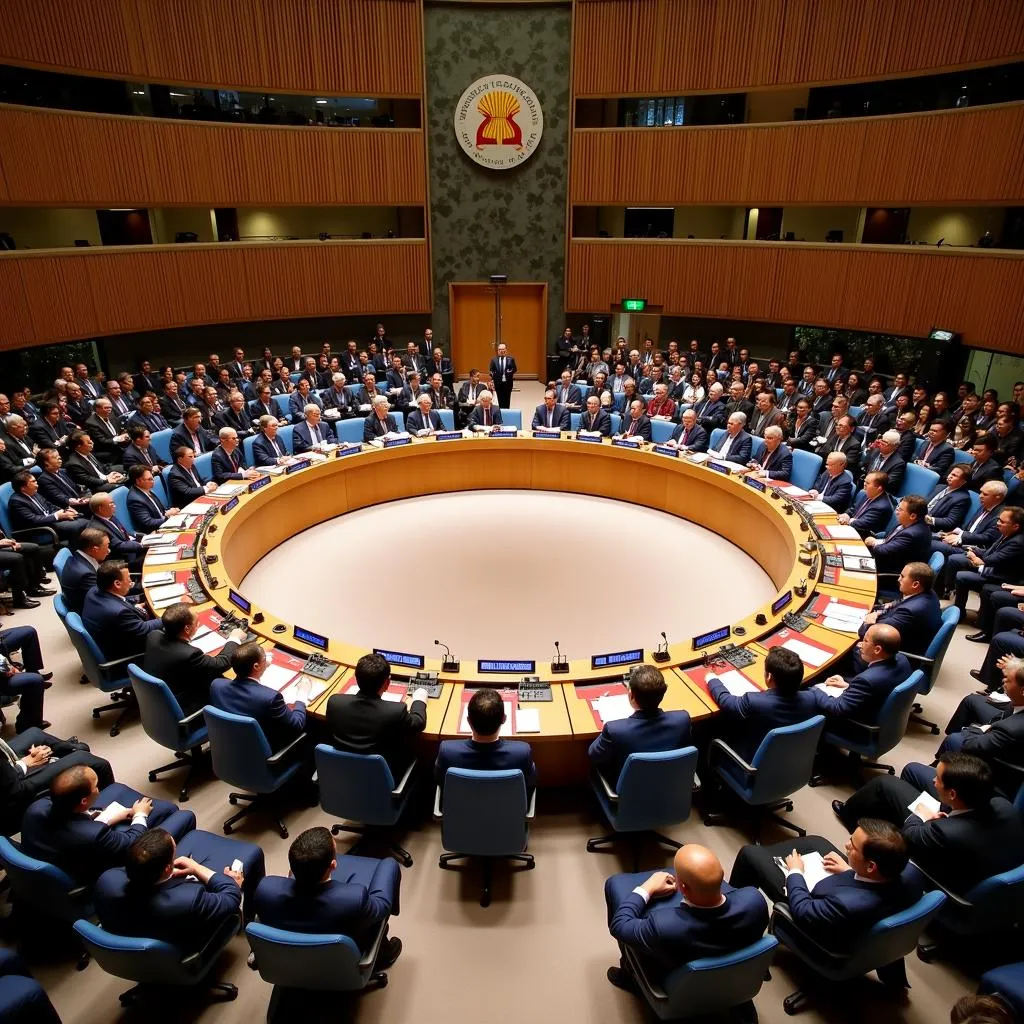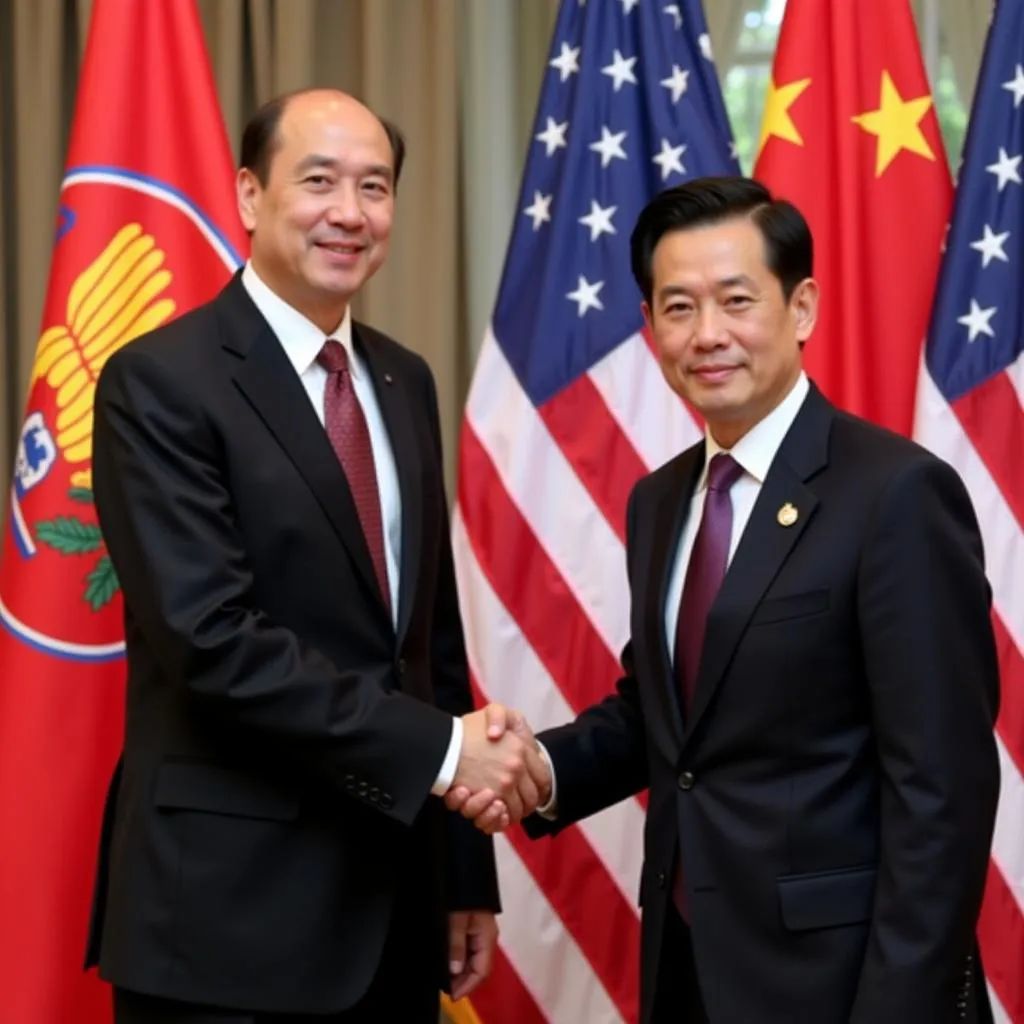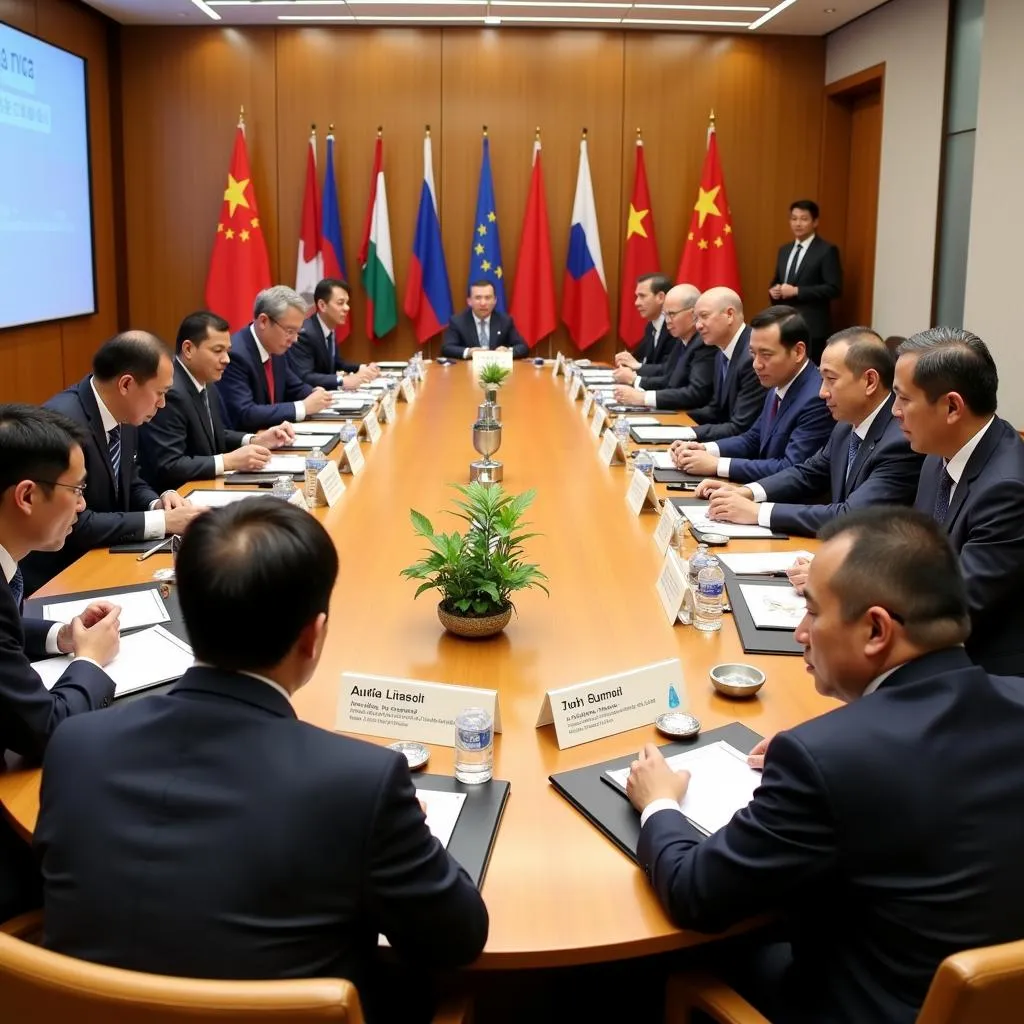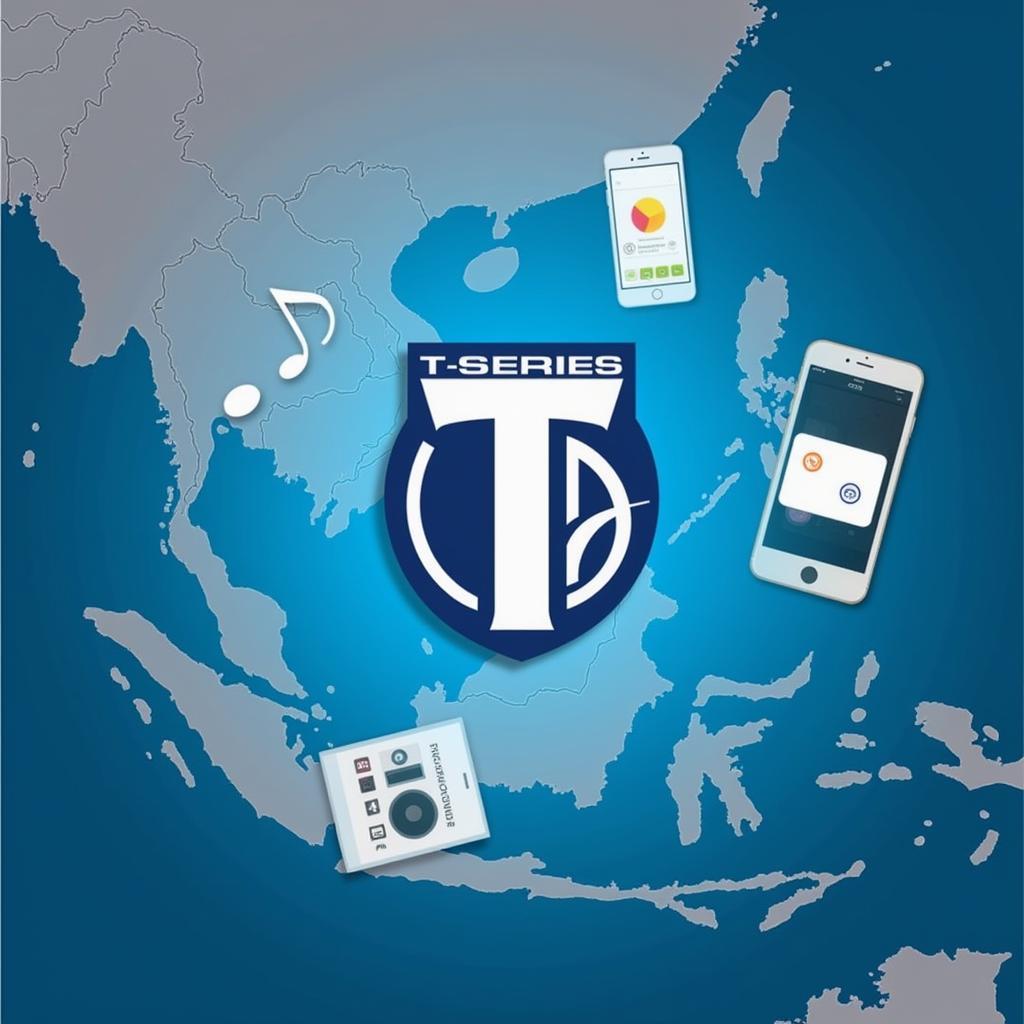Understanding the intricate web of alliances within ASEAN is crucial for grasping the region’s geopolitical landscape. This syllabus provides a comprehensive overview of ASEAN’s key partnerships, their historical evolution, and their impact on Southeast Asia’s political, economic, and security dynamics.
 ASEAN Regional Forum Meeting
ASEAN Regional Forum Meeting
Delving into ASEAN’s Core Principles
ASEAN, the Association of Southeast Asian Nations, stands as a testament to regional cooperation. Founded in 1967, its primary goal is to foster peace, stability, and prosperity among its ten member states: Brunei, Cambodia, Indonesia, Laos, Malaysia, Myanmar, the Philippines, Singapore, Thailand, and Vietnam. Central to ASEAN’s success are its guiding principles:
- Respect for sovereignty and territorial integrity: Each member’s right to self-determination and non-interference in internal affairs is paramount.
- Peaceful resolution of disputes: Dialogue and diplomacy are the preferred methods for addressing disagreements.
- Non-interference in internal affairs: Member states refrain from intervening in each other’s domestic matters.
- Renunciation of the threat or use of force: ASEAN promotes a culture of peace and stability.
ASEAN’s Dialogue Partners: A Multifaceted Network
Beyond its internal cohesion, ASEAN actively engages with external partners to advance shared interests. These “Dialogue Partners” play a crucial role in strengthening ASEAN’s regional and global standing.
 ASEAN-US Summit Handshake
ASEAN-US Summit Handshake
Dialogue Partner Classifications:
- Full Dialogue Partners: These countries, including major powers like China, Japan, and the United States, engage with ASEAN across a wide spectrum of political, economic, and security issues.
- Sectoral Dialogue Partners: These nations, such as India and Pakistan, focus on cooperation in specific areas like trade or development.
- Development Partners: Entities like the European Union provide technical assistance and capacity-building support to ASEAN.
ASEAN’s Key Alliances: Shaping Regional Dynamics
ASEAN’s alliances extend beyond formal partnerships, encompassing a complex network of bilateral and multilateral relationships:
1. ASEAN Plus Three (APT): Forging East Asian Integration
Formed in 1997, APT brings together ASEAN’s ten members with China, Japan, and South Korea. This forum aims to:
- Enhance economic cooperation: Through initiatives like the Chiang Mai Initiative Multilateralisation (CMIM), APT bolsters regional financial stability.
- Promote political and security dialogue: APT provides a platform for addressing shared concerns, including transnational crime and maritime security.
- Strengthen cultural and people-to-people exchanges: APT fosters closer ties among East Asian nations.
2. The East Asia Summit (EAS): A Premier Forum for Strategic Dialogue
Established in 2005, the EAS brings together ASEAN Plus Three members along with Australia, India, New Zealand, Russia, and the United States. As a leaders-led forum, the EAS:
- Tackles critical regional and global challenges: Discussions encompass issues such as terrorism, climate change, and non-proliferation.
- Promotes dialogue on strategic issues: The EAS serves as a platform for major powers to engage with Southeast Asian nations on matters of mutual concern.
- Advances cooperation on non-traditional security threats: The EAS facilitates collaboration on issues such as cybersecurity, pandemics, and natural disasters.
 East Asia Summit Roundtable
East Asia Summit Roundtable
Navigating ASEAN’s Complexities: Key Takeaways
- ASEAN’s alliances are multifaceted and dynamic: They reflect the region’s evolving geopolitical landscape.
- Dialogue and cooperation are central to ASEAN’s approach: The organization prioritizes peaceful resolution of disputes and multilateralism.
- ASEAN’s partnerships play a vital role in addressing regional and global challenges: From economic integration to security cooperation, these alliances contribute to Southeast Asia’s stability and prosperity.
Understanding ASEAN’s intricate web of alliances is crucial for policymakers, businesses, and individuals seeking to engage with this dynamic region. By fostering dialogue, cooperation, and mutual understanding, ASEAN and its partners can effectively address shared challenges and build a more peaceful and prosperous future for Southeast Asia.
Frequently Asked Questions about ASEAN Alliances:
1. What is the significance of ASEAN’s “Dialogue Partner” status?
Dialogue Partner status grants countries or organizations a formal platform to engage with ASEAN on various issues. It signifies a commitment to dialogue, cooperation, and shared interests.
2. How do ASEAN’s alliances impact the region’s economic landscape?
ASEAN’s partnerships, particularly with major economies like China, Japan, and the US, drive trade, investment, and economic integration within Southeast Asia.
3. What role do ASEAN’s alliances play in addressing security challenges?
ASEAN’s partnerships provide frameworks for dialogue and cooperation on security threats, ranging from terrorism and transnational crime to maritime disputes and cybersecurity.
4. How does ASEAN balance its relationships with major powers?
ASEAN maintains its centrality and avoids alignment with any single power, emphasizing dialogue, cooperation, and a rules-based international order.
5. What are some of the future challenges facing ASEAN’s alliances?
Geopolitical tensions, economic uncertainties, and emerging security threats require ASEAN and its partners to adapt and strengthen cooperation mechanisms.
Need More Information?
For inquiries or assistance regarding Asean Media and information resources, please contact us at:
Phone Number: 0369020373
Email: [email protected]
Address: Thon Ngoc Lien, Hiep Hoa, Bac Giang, Vietnam
Our dedicated support team is available 24/7 to assist you.

